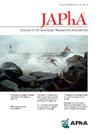评估药房主导的RxChange干预对电子处方药物使用和成本结果的影响。
IF 2.5
4区 医学
Q3 PHARMACOLOGY & PHARMACY
Journal of the American Pharmacists Association
Pub Date : 2025-05-01
DOI:10.1016/j.japh.2025.102349
引用次数: 0
摘要
背景:RxChange流程在电子处方工作流程中为药剂师领导的团队提供了一个简化的解决方案,以解决供应商的处方问题。需要对其使用和有效性进行评估,以加强药房与提供者的沟通,改善患者获得护理的机会,并提高患者安全。目的:评估使用RxChange流程对电子处方内容、成本以及与用药安全相关的变化。方法:采用分层随机抽样的方法,对2022年至2023年全国RxChange交易进行回顾性分析。所有数据均来自Surescripts。数据集直接包括RxChange响应数据,根据协议共享,以提供有限的、时移的和去标识的信息。我们测量了RxChange过程前后活性成分、强度、剂型、治疗类别和相关费用的变化。成本分析基于2021年医疗支出小组调查的数据,通过比较干预前后的药物单位成本。此外,我们分析了药物不良反应(ADR)代码与由此产生的药物修改之间的关系。结果:我们的分析包括1,361,528个RxChange交易记录,重点关注721,415个处方批准的交易。使用RxNorm API的药物数据映射在93.4%的记录中成功,其中31.3%的记录由于药学干预而发生了重大修改。其中,43,293条记录与成本数据相关联,显示平均单位成本节省3.5美元。强度变化是最常见的药物调整,特别是在治疗互换情况下。缺货情况导致大多数复杂的修改,包括成分、强度和剂型的多重同时变化。在25.8%的adr相关交易中,与adr相关的RxChange请求主要促使同时进行强度和成分调整。结论:在电子处方工作流程中,药房发起的RxChange通信在提高电子处方质量和使药房团队干预更具可追溯性方面发挥了至关重要的作用。研究结果强调了药房与供应商合作在解决处方挑战、促进药物调整和支持通过RxChange流程提高药物安全性方面的重要性。本文章由计算机程序翻译,如有差异,请以英文原文为准。
Evaluating the impact of pharmacy-led RxChange interventions on medication use and cost outcomes for electronic prescriptions
Background
The RxChange process provides a streamlined solution within electronic prescribing workflows for a pharmacist-led team to address prescription issues with providers. Its use and effectiveness need to be evaluated to enhance pharmacy-provider communication, improve patient access to care, and increase patient safety.
Objective
To assess the use of the RxChange process on e-prescription content, cost, and changes related to medication safety.
Methods
We conducted a retrospective analysis of national RxChange transactions from 2022 to 2023, using stratified random sampling. All data was obtained from Surescripts. The dataset directly included RxChange response data, shared under agreements to provide limited, time-shifted, and de-identified information. We measured the changes in active ingredients, strengths, dose forms, therapeutic classes, and associated costs before and after the RxChange process. Cost analysis was based on data from the 2021 Medical Expenditure Panel Survey by comparing medication unit costs before and after interventions. Additionally, we analyzed the associations between adverse drug reaction (ADR) codes and the resulting medication modifications.
Results
Our analysis included 1,361,528 RxChange transaction records, focusing on 721,415 prescriber-approved transactions. Medication data mapping using RxNorm API was successful in 93.4% of these records, with 31.3% undergoing significant modifications due to pharmacy interventions. Of these, 43,293 records were linked to cost data, revealing an average unit cost saving of $3.5. Strength changes emerged as the most frequent medication adjustment, particularly in therapeutic interchange scenarios. Out-of-stock situations led to most complex modifications involving simultaneous multiple changes in ingredients, strength, and dose form. ADR-related RxChange requests mostly prompted simultaneous strength and ingredient adjustments in 25.8% of ADR-related transactions.
Conclusions
The study concludes that pharmacy-initiated RxChange communications within the electronic prescription workflow play a crucial role in enhancing e-prescription quality and making pharmacy team interventions more traceable. The findings highlight the importance of pharmacy-provider collaboration in addressing prescribing challenges, facilitating medication adjustments, and supporting efforts to improve medication safety through the RxChange process.
求助全文
通过发布文献求助,成功后即可免费获取论文全文。
去求助
来源期刊
CiteScore
3.30
自引率
14.30%
发文量
336
审稿时长
46 days
期刊介绍:
The Journal of the American Pharmacists Association is the official peer-reviewed journal of the American Pharmacists Association (APhA), providing information on pharmaceutical care, drug therapy, diseases and other health issues, trends in pharmacy practice and therapeutics, informed opinion, and original research. JAPhA publishes original research, reviews, experiences, and opinion articles that link science to contemporary pharmacy practice to improve patient care.

 求助内容:
求助内容: 应助结果提醒方式:
应助结果提醒方式:


